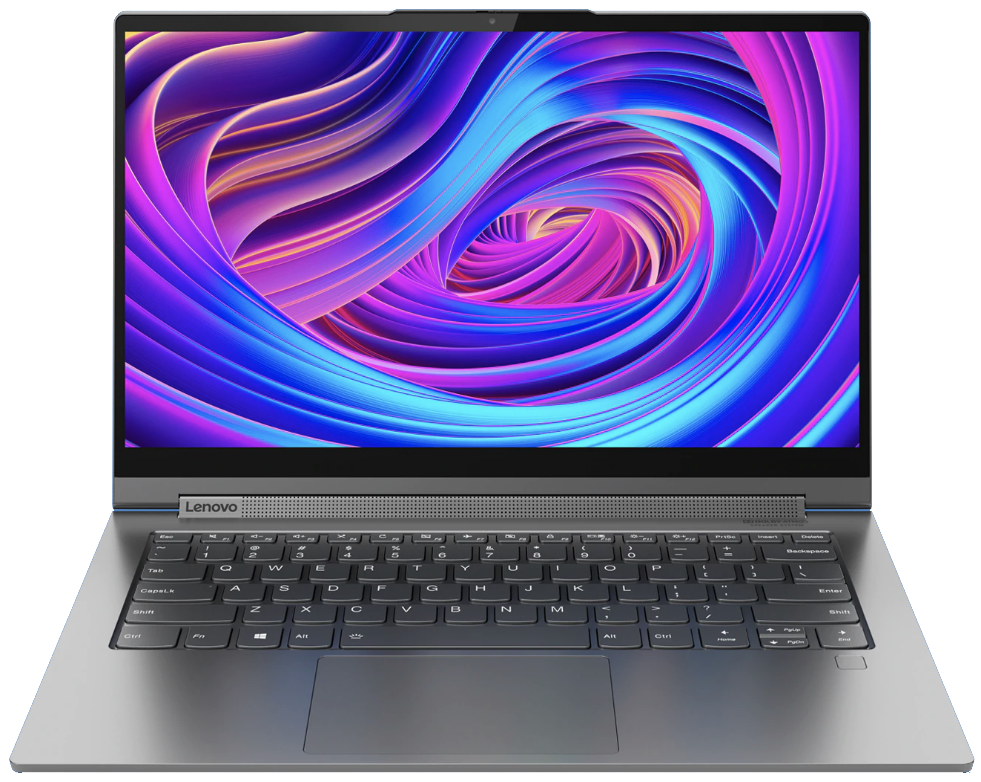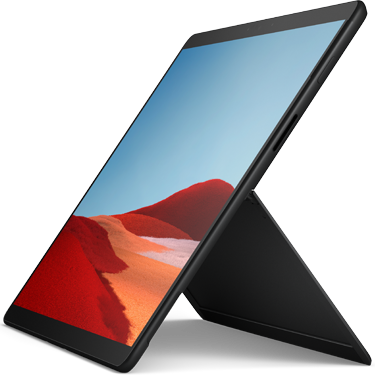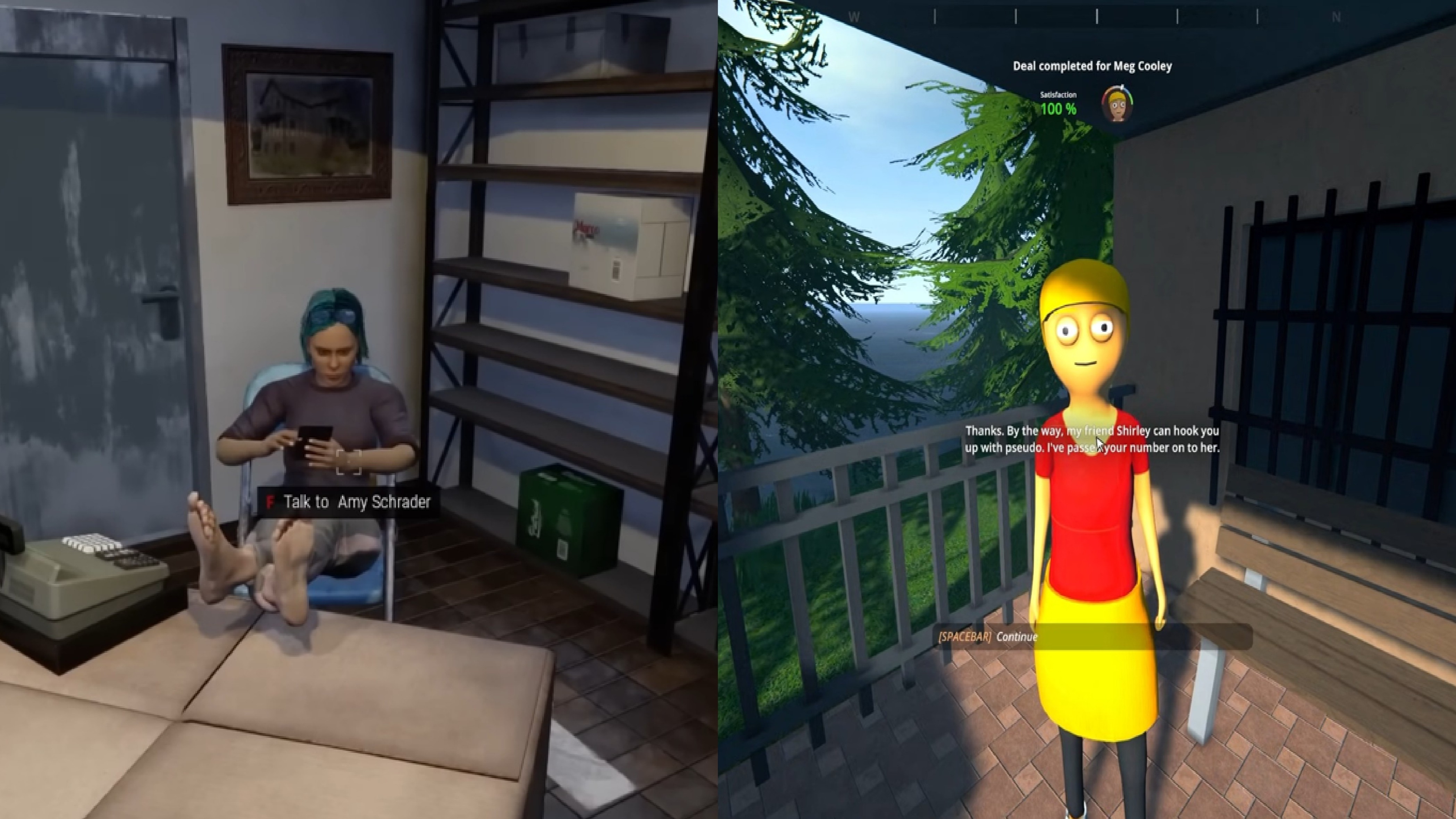Lenovo Yoga C940 vs. Surface Pro X: Which is the better 2-in-1?

Traditional Performer
Lenovo's Yoga C940 comes in 14- and 15-inch flavors, though if you want to kit it out with the most powerful components available to the 2-in-1, you'll want to go with the largest size.
For
- 10th Gen Intel CPUs available
- Beautiful 4K touch display option
- Soundbar hinge with full audio
- NVIDIA GTX 1650 GPU available
- Comfortable keyboard
Against
- Heavier
- More pricey

ARM'ed Surface
The Surface Pro X is the new ARM kid on the block, rocking a custom Qualcomm and Microsoft CPU. You can't choose a dedicated GPU and you must buy the keyboard cover separately, but it's a stunning form factor with LTE.
For
- More affordable
- LTE as standard
- Up to 1TB storage
- Gorgeous design
- Seriously thin and light
Against
- No dedicated GPU
- No Wi-Fi 6 connectivity
- ARM has some limitations
- No included pen or keyboard
Lenovo charges a premium for the Yoga C940, especially the 15-inch mode, which can not only house a powerful Intel Core i9 processor, but also a dedicated NVIDIA GPU. If you'd rather pick up a tablet with LTE, the Surface Pro X is a solid option for frequent travelers.
Lenovo Yoga C940 vs. Surface Pro X specs
| Header Cell - Column 0 | Yoga C940 | Surface Pro X |
|---|---|---|
| Processor | 14-inch 10th GenIntel Core i5-1035G4Intel Core i7-1065G715-inch 9th GenIntel Core i7-9750HIntel Core i9-9880H vPro | Microsoft SQ1 |
| RAM | 14-inch8GB LPDDR4x-3733MHz16GB LPDDR4x-3733MHz15-inch12GB DDR4-2666MHz16GB DDR4-2666MHz | 8GB LPDDR4x16GB LPDDR4x |
| Storage | 256GB M.2 PCIe SSD512GB M.2 PCIe SSD1TB M.2 PCIe SSD2TB M.2 PCIe SSD | 128GB M.2 PCIe SSD256GB M.2 PCIe SSD512GB M.2 PCIe SSD |
| Display size | 14 inches15.6 inches | 13 inches |
| Display resolution | 1920x1080 (FHD)3840x2160 (UHD) | 2880x1920 |
| Stylus | Active Pen included | Optional extra |
| Aspect ratio | 16:9 | 3:2 |
| Graphics | 14-inchIntegrated Intel Iris Plus15-inchNVIDIA GTX 1650 (4GB VRAM) | Microsoft SQ1 Adreno 685 |
| Ports | 14-inch2x Thunderbolt 31x USB-A 3.13.5mm audio15-inch2x Thunderbolt 31x USB-A 3.13.5mm audio | 2x USB-CSurface Connectnano SIM |
| Wireless | Intel 802.11AX (Wi-Fi 6)Intel 802.11ACBluetooth 5.0 | Intel 802.11AX (Wi-Fi 5)Bluetooth 5.0 |
| LTE | - | Qualcomm Snapdragon X24 LTE modem |
| Camera | Front-facing 720p | Front-facing 1080pRear-facing 4K |
| Security | Fingerprint readerWebcam shutter | IR camera |
| Battery | 14-inch60Wh15-inch68Wh | Up to 13 hours |
| Dimensions | 14-inch12.61 x 8.54 x 0.57 - 0.61 inches(320.3mm x 215.6mm x 14.5 - 15.7mm)15-inch13.98 x 9.38 x 0.68 - 0.77 inches(355.2mm x 238.9mm x 17.5 - 19.7mm) | 11.3 x 8.2 x 0.28 inches(287mm x 208mm x 7.3mm) |
| Weight | 14-inchFrom 2.98 pounds (1.35kg)15-inchFrom 4.41 pounds (2.0kg) | From 1.7 pounds (774g) |
| Colors | Iron GreyMica | Matte Black |
Design & features
Unlike the Surface Pro 7, which saw no notable changes to its design compared to previous generations, Microsoft switched up the design of the Surface Pro X to tease what's to come for future Surface Pro hardware. The Pro X comes rocking a thinner chassis that's lighter than the high-end Surface Pro 7. You've still got the familiar kickstand on the rear, however.
While optional, the Type Cover for the Surface Pro X has a special holder for the Surface Slim Pen, which you'd also need to purchase as an additional accessory. The excellent rear webcam is capable of 4K video, while the front-facing IR cam is meant for calls and Windows Hello.
Both the 14- and 15-inch Yoga C940 from Lenovo are fairly similar to one another, and like the Surface Pro X rock a unibody aluminum design. Since these are more like laptops than tablets, you have a convertible hinge that allows you to rotate the display to enjoy tent, stand, and tablet modes. The hinge also houses a soundbar, which is a neat uses of space. There's no IR camera on the Yoga C940, but instead a fingerprint reader.
The Surface Pro X comes with two USB-C ports, but lacks USB-A and a 3.5mm headphone jack. A highlight feature of the Pro X is the ARM processor from Qualcomm, which has support for an LTE modem. This capability allows you to get connected when out of Wi-Fi range, so long as you have cell signal. The Yoga C940 wins in the ports department with the inclusion of two Thunderbolt 3, one USB-A 3.1, and a 3.5mm audio jack. That's not amazing, but does allow you to connect most of your hardware and accessories.
Display
For the display, the Surface Pro X comes with a touch display with a screen resolution of 2880x1920 (267 PPI) at a 3:2 aspect ratio. The 14-inch Lenovo Yoga C940 display comes in either FHD anti-glare with 400 nits brightness, FHD glossy with 400 nits brightness, FHD anti-glare with 500 nits brightness, or UHD 4K glossy with HDR400. For the best picture possible, you'll want to go with the 4K option, but keep in mind the price will rise, and battery life will drop accordingly.
If you're after a larger laptop, the 15.6-inch model comes with either a FHD or 4K display with HDR400 and Dolby Vision support. Both of these panels are glossy, but can throw out a lot of light with a rating of 500 nits. In either case, you're getting a beautiful display, but the larger model will make substantial productivity just a bit easier thanks to the increased screen real estate.
Get the Windows Central Newsletter
All the latest news, reviews, and guides for Windows and Xbox diehards.
Performance & price
The Lenovo Yoga C940 is a powerful laptop and can be configured with a dedicated NVIDIA GTX 1650 GPU and up to a 9th Gen Intel Core i9 processor (15-inch only), or newer 10th Gen without the dedicated GPU (14-inch only). The ARM processor in the Surface Pro X isn't slow by any means and is often compared to an 8th Gen Intel Core i5 processor, but if you're all about intensive apps and tasks, you'll want to go with the Lenovo C940.
Because of the more capable hardware, the Yoga C940 costs considerably more than the Surface Pro X. While it does come with superior internals, the Surface Pro X is designed more for those who are frequently on the road. LTE and true portability often means more than outright performance. These two devices target two different user groups.
If you're on a tighter budget, the Surface Pro X starts from $999. The most affordable Lenovo Yoga C940 costs considerably more at $1,150.
The Yoga C940 is a more powerful 2-in-1 laptop
Lenovo's Yoga C940 is a pricey 2-in-1, but that's because you can configure it with some excellent hardware, including an Intel Core i9 processor as well as a dedicated NVIDIA GPU. The smaller 14-inch is a little more portable, but can keep up with any task you throw its way.

Premium 2-in-1 with powerful internals
The 14- and 15-inch Yoga C940 is more expensive, but you get more power in a traditional laptop chassis with the option for a few different modes.
Go with the Surface Pro X for better portability
The ARM-powered Surface Pro X won't match up performance-wise with the higher-end Yoga C940 models, but LTE connectivity, longer battery life, and a slimmer body make it easy to take with you wherever you go. A smart new storage system for a slimmer pen is an attractive addition, and two USB-C ports offer decent connectivity.

Rich Edmonds was formerly a Senior Editor of PC hardware at Windows Central, covering everything related to PC components and NAS. He's been involved in technology for more than a decade and knows a thing or two about the magic inside a PC chassis. You can follow him on Twitter at @RichEdmonds.
